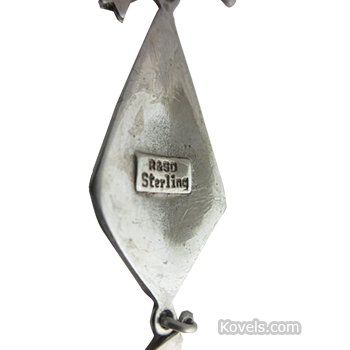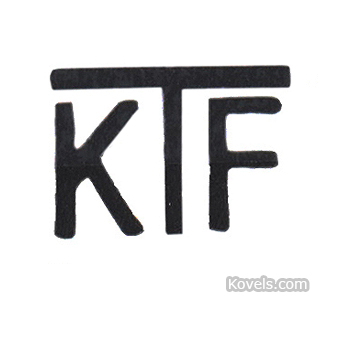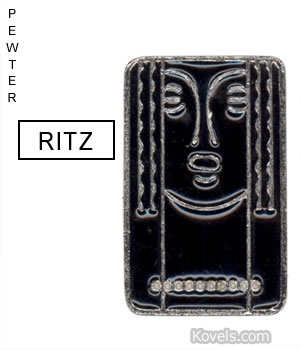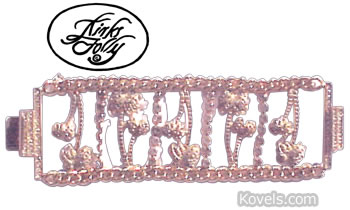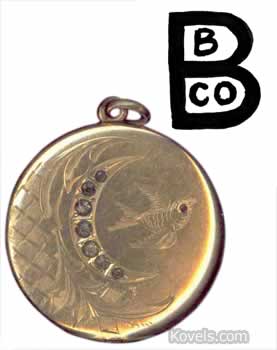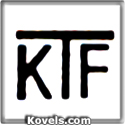R&SD Jewelry Mark
Q: I've been researching this mark and simply cannot find it anywhere. It's an Art Nouveau enamel and sterling silver necklace marked "R & SD" and "Sterling." Can you help me?
A: Although your pendant is in the Art Nouveau style, it was not made during the Art Nouveau period, from 1895 to 1905. Pieces marked "R & SD" are recent reproductions made in Thailand. Designs and colors used by this company are similar to jewelry made by Charmian Deacon, who in 1972, started making enamel and silver jewelry cast from pieces she found at London antique markets. Her jewelry was designed to sell at more affordable prices than original pieces. Sources say jewelry marked "R & SD" is not made with real enamel, but with a plastic resin material. You can test this with a hot pin. If the jewelry is enamel, the pin won't penetrate it. If it's resin, the pin will pierce it. We have also learned that some sellers have tried to obliterate the mark and sell the jewelry as "antique." Other sellers are honest and label the jewelry as new.
